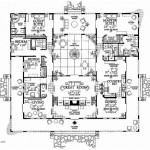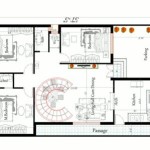House Plans with Elevator: A Guide to Vertical Accessibility
Elevators are becoming an increasingly popular feature in residential homes, driven by factors like aging in place, multigenerational living, and enhanced accessibility. Integrating an elevator into a house plan requires careful consideration of space, budget, and lifestyle needs. This guide explores various aspects of incorporating an elevator into a home's design.
Types of Home Elevators
Several elevator types are suitable for residential use, each with its advantages and disadvantages. Hydraulic elevators utilize a piston within a shaft, pushing the elevator cab upwards. They are generally less expensive to install but require more space for the hydraulic machinery. Traction elevators, on the other hand, use steel cables and a counterweight system, making them more energy-efficient and suitable for taller homes. Pneumatic vacuum elevators are a more recent innovation, using air pressure to move the cab. They are known for their compact design and ease of installation, requiring no separate machine room.
Space Planning and Design Considerations
Incorporating an elevator significantly impacts the overall layout of a house. The elevator shaft requires dedicated space, typically a minimum of 5 feet by 5 feet for a standard-sized cab. This space needs to be factored into the design from the initial planning stages. The location of the elevator is crucial for accessibility and convenience, ideally providing access to all floors, including basements and attics, if applicable.
Placement near the main entrance or central hallway is often preferred for ease of access. Additionally, consideration should be given to the structural requirements of the elevator, including adequate support for the shaft and machinery. Consulting with an architect and a structural engineer is vital to ensure the home's structural integrity and compliance with building codes.
Cost Considerations
The cost of installing a home elevator can vary widely depending on several factors, including the type of elevator, the number of stops, the cab size and finishes, and the complexity of the installation. Hydraulic elevators are typically less expensive upfront but may incur higher maintenance costs over time. Traction elevators, while generally more expensive to install, are known for their longer lifespan and lower operating costs. Pneumatic vacuum elevators fall somewhere in between in terms of cost.
Beyond the initial purchase and installation costs, homeowners should also factor in ongoing maintenance and inspection fees. Regular maintenance is essential to ensure the elevator's safe and reliable operation. It's advisable to obtain quotes from multiple elevator companies to compare pricing and services.
Building Codes and Regulations
Home elevators are subject to building codes and regulations that vary by location. These codes address safety requirements, including fire safety, emergency features, and accessibility standards. Permitting is typically required before installation can begin. Working with a reputable elevator company familiar with local codes and regulations is essential to ensure compliance and avoid potential delays or problems.
Accessibility and Universal Design Principles
Integrating an elevator into a home promotes accessibility and adheres to universal design principles, making the home usable for people of all ages and abilities. This is particularly beneficial for individuals with mobility limitations, seniors aging in place, and families with young children or individuals with disabilities. An elevator can significantly improve the quality of life and independence for residents, allowing them to navigate their homes safely and comfortably.
Aesthetic Integration with Home Design
The elevator cab and its surrounding elements can be customized to complement the overall aesthetic of the home. Options for cab finishes include various wood veneers, laminates, and metals. Lighting, handrails, and other details can be selected to match the home's interior design style. The elevator doors can also be designed to blend seamlessly with the surrounding walls and doorways.
Long-Term Value and Resale Potential
While installing a home elevator represents a significant investment, it can add long-term value to the property and enhance its resale potential. Homes with elevators are increasingly sought after by buyers looking for accessible and multigenerational living options. An elevator can be a valuable selling point, particularly in areas with an aging population.
Maintenance and Safety Considerations
Regular maintenance is crucial for the safe and reliable operation of a home elevator. This includes routine inspections, lubrication, and component replacements as needed. Homeowners should establish a maintenance contract with a qualified elevator company to ensure that the elevator is properly serviced and maintained. Safety features such as emergency stop buttons, alarm systems, and backup power systems should be regularly tested and maintained.
Choosing the Right Elevator Company
Selecting a reputable and experienced elevator company is essential for a successful installation. Homeowners should research different companies, compare quotes, and check references. It's crucial to choose a company that is licensed, insured, and familiar with local building codes and regulations. A good elevator company will provide comprehensive consultation, professional installation, and reliable maintenance services.

House Plans With Residential Elevator Drummond

Low Country House Plan With Elevator 9140gu Architectural Designs Plans

House Plans With Residential Elevator Drummond

Plan 29804rl 4 Beds With Elevator And Basement Options Floor Plans House How To

Contemporary House Plan With Elevator For The Narrow Lot 36546tx Architectural Designs Plans

House Plans With Residential Elevator Drummond

Plan 25684ge Multi Gabled Craftsman Home With Elevator Accessible Guest Studio Suite House Plans Rustic Style

Castle Home Plan With Elevator 44109td Architectural Designs House Plans

Bahama Breeze 1892 4 Bedrooms And 3 5 Baths The House Designers

Elevator Equipped House Plans Sater Design Collection








